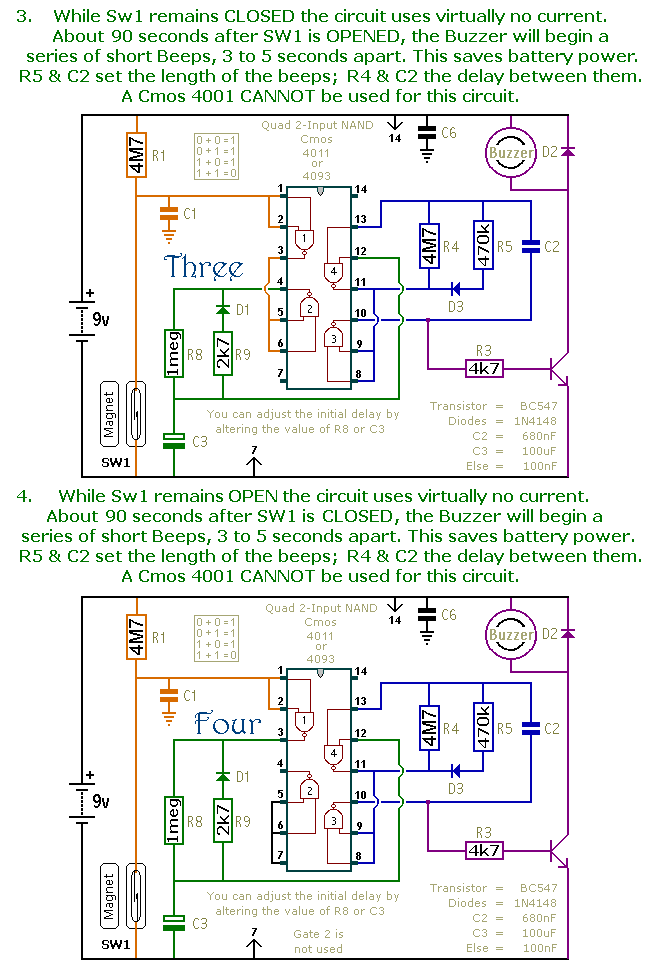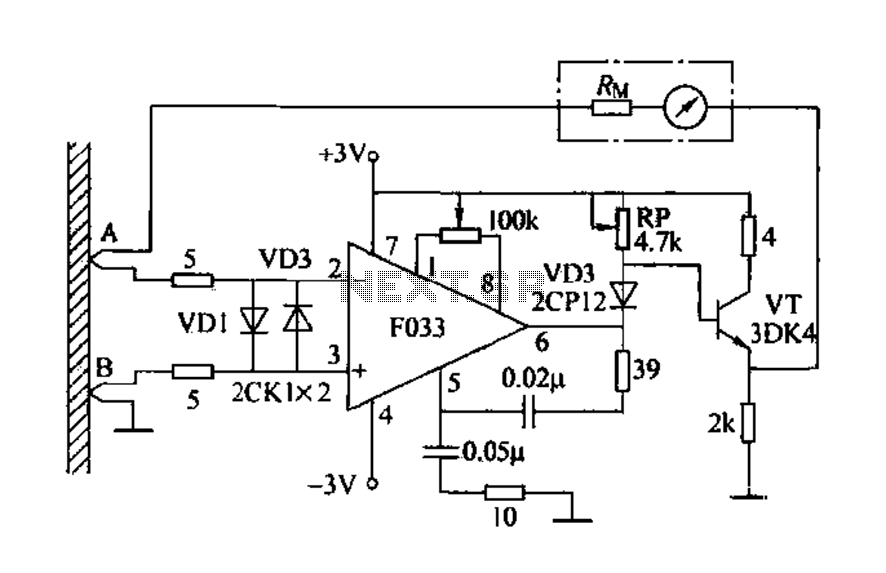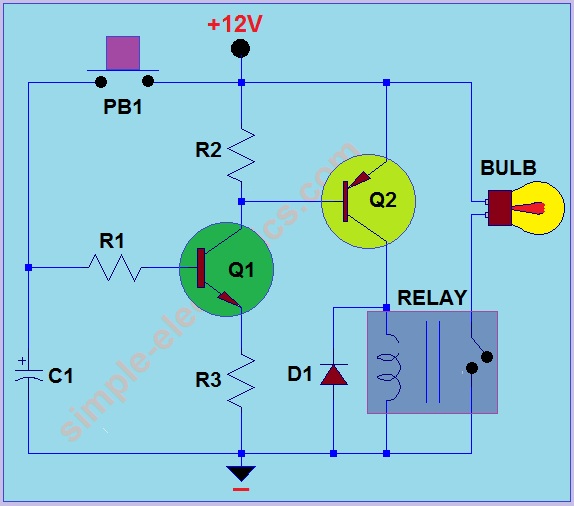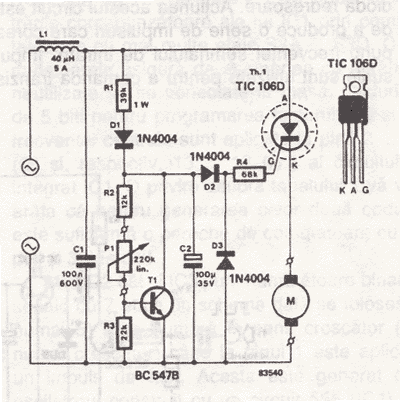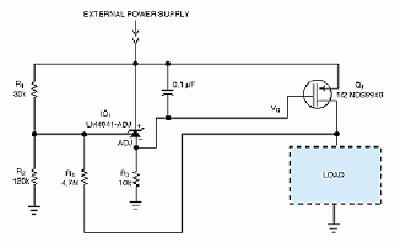
Multipurpose tape recorders TV signal generator circuit

The circuit depicted in the figure includes IC1 and C1, which form a low-frequency oscillator operating at approximately 400 Hz. IC2 and C3 are configured to create a frequency oscillator around 37 MHz. The low-frequency signal is output from C2, while the high-frequency signal is modulated. C4 is utilized for antennas and the transmission system. Harmonics can receive signals from the high-frequency oscillator or other channels, resulting in three TV channels displaying a black-and-white striped signal. Points A and B provide output signals for the detection of low-frequency signals and image channels, respectively. C3 can be replaced with a quartz crystal to enhance frequency stability, as indicated by the dotted lines in the figure. If a terminal or socket is connected to C3, it can accommodate various crystal frequencies, including 465 kHz, 10.7 kHz, 6.5 kHz, 4.43 MHz, and 37 MHz, making it suitable for use in tape recorders and television intermediate frequency (IF) signal sources.
The circuit design incorporates two primary oscillators, a low-frequency oscillator and a high-frequency oscillator, which work in tandem to modulate signals for transmission. The low-frequency oscillator, composed of IC1 and C1, is responsible for generating a stable 400 Hz signal, which can be utilized for various audio applications or as a reference frequency in other circuits. The output from this oscillator is routed through C2, which serves as a coupling capacitor, allowing the low-frequency signal to pass while blocking any DC components.
On the other hand, the high-frequency oscillator, formed by IC2 and C3, operates at 37 MHz. This oscillator is crucial for modulating the low-frequency signal onto a higher frequency carrier wave, enabling efficient transmission over antennas. The design includes provisions for harmonic reception, allowing the circuit to pick up signals from the high-frequency oscillator or other channels, which is particularly useful for television signals. The presence of harmonics can lead to the reception of multiple channels, resulting in the observed black-and-white striped signals on the television display.
Points A and B in the circuit serve as output terminals for detecting the respective low-frequency and image channel signals. This dual output capability enhances the circuit's versatility, allowing it to be used in a variety of applications, including signal processing and television reception.
Furthermore, the design allows for the substitution of C3 with a quartz crystal, which can significantly improve the frequency stability of the oscillator. The circuit provides flexibility in selecting different crystal frequencies, making it adaptable for various applications such as tape recorders and television IF signal sources. By changing the crystal, users can easily switch between frequencies like 465 kHz, 10.7 kHz, 6.5 kHz, 4.43 MHz, and the original 37 MHz, further enhancing the circuit's functionality and performance in signal modulation and reception tasks. Circuit shown in Figure, IC1, C1 composition 400HZ about low frequency oscillator; IC2, C3 composed around 37MHZ frequency oscillator; low-frequency signal from the output C2 o f the high-frequency signal is modulated. C4 antennas and transmission system. Harmonics can receive high-frequency oscillator (or other channels) in the three TV channels showed black and white stripe signal. A point, B point output signal, respectively, for the detection of low-frequency signal and image channel.
The C3 can replace quartz crystal oscillation frequency stability, as shown in dotted lines in FIG. If the access point using a terminal C3 or socket, respectively, into the C3 crystal; frequency is selected 465KHZ, 10.7KHZ, 6.5KHZ, 4.43MHZ, 37MHZ can do tape recorders, television IF signal source.
The circuit design incorporates two primary oscillators, a low-frequency oscillator and a high-frequency oscillator, which work in tandem to modulate signals for transmission. The low-frequency oscillator, composed of IC1 and C1, is responsible for generating a stable 400 Hz signal, which can be utilized for various audio applications or as a reference frequency in other circuits. The output from this oscillator is routed through C2, which serves as a coupling capacitor, allowing the low-frequency signal to pass while blocking any DC components.
On the other hand, the high-frequency oscillator, formed by IC2 and C3, operates at 37 MHz. This oscillator is crucial for modulating the low-frequency signal onto a higher frequency carrier wave, enabling efficient transmission over antennas. The design includes provisions for harmonic reception, allowing the circuit to pick up signals from the high-frequency oscillator or other channels, which is particularly useful for television signals. The presence of harmonics can lead to the reception of multiple channels, resulting in the observed black-and-white striped signals on the television display.
Points A and B in the circuit serve as output terminals for detecting the respective low-frequency and image channel signals. This dual output capability enhances the circuit's versatility, allowing it to be used in a variety of applications, including signal processing and television reception.
Furthermore, the design allows for the substitution of C3 with a quartz crystal, which can significantly improve the frequency stability of the oscillator. The circuit provides flexibility in selecting different crystal frequencies, making it adaptable for various applications such as tape recorders and television IF signal sources. By changing the crystal, users can easily switch between frequencies like 465 kHz, 10.7 kHz, 6.5 kHz, 4.43 MHz, and the original 37 MHz, further enhancing the circuit's functionality and performance in signal modulation and reception tasks. Circuit shown in Figure, IC1, C1 composition 400HZ about low frequency oscillator; IC2, C3 composed around 37MHZ frequency oscillator; low-frequency signal from the output C2 o f the high-frequency signal is modulated. C4 antennas and transmission system. Harmonics can receive high-frequency oscillator (or other channels) in the three TV channels showed black and white stripe signal. A point, B point output signal, respectively, for the detection of low-frequency signal and image channel.
The C3 can replace quartz crystal oscillation frequency stability, as shown in dotted lines in FIG. If the access point using a terminal C3 or socket, respectively, into the C3 crystal; frequency is selected 465KHZ, 10.7KHZ, 6.5KHZ, 4.43MHZ, 37MHZ can do tape recorders, television IF signal source.
